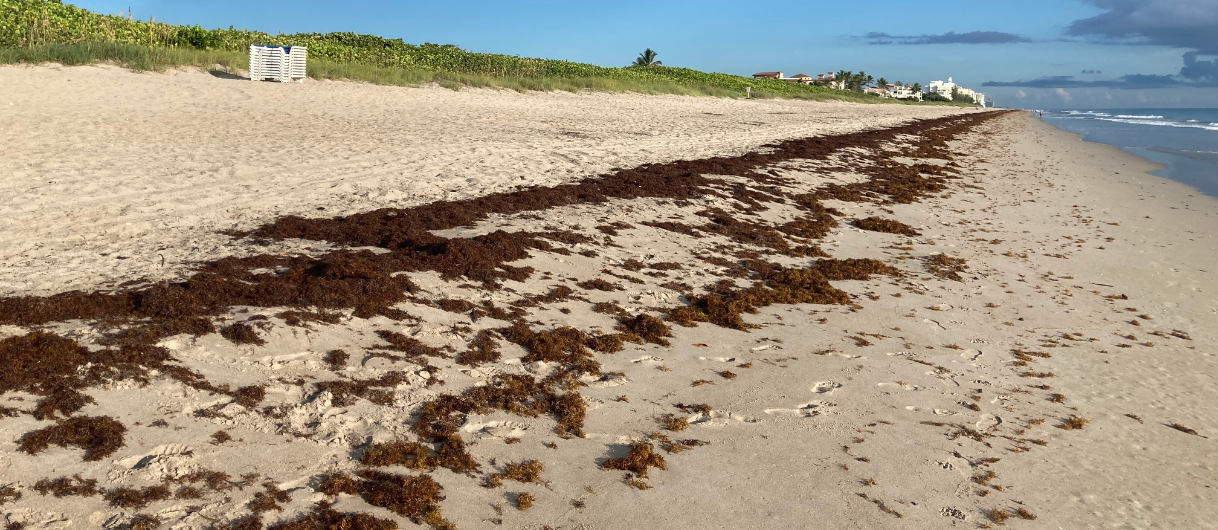Smelly seaweed littering your beach? It’s more proof of how we’ve abused our waters
Smelly seaweed littering your beach? It’s more proof of how we’ve abused our waters

It’s annoying, unsightly and sometimes stinky.
And unfortunately, the sargassum seaweed that’s been piling up on South Florida beaches this summer is yet another indicator that our waters are out of whack — and in need of serious help.
Sargassum is actually a macroalgae, and it plays a vital ecological role, serving as a food and refuge for marine life. And it’s not inherently hazardous to human health, though as it piles up on Florida beaches and begins to decay in the intense sunlight, the rotten egg stench might assault your nostrils, irritating your airways.
Problem is, more and more of it has been piling up. The University of South Florida estimated that in June, a record 24.2 million tons of the seaweed was floating in the Atlantic, up from 18.8 million tons 13 months earlier.
Consequently, more sargassum’s been washing ashore. Recently the Miami Herald reported that between October 2019 and September 2020, Miami-Dade County collected about 15,000 tons of seaweed from local beaches. The next year, that figure rose to 21,000 tons.
This year, with August and September numbers yet unaccounted for, county records show nearly 25,000 tons have been collected.
The seaweed piles create a barrier between the sand and sea, causing trouble for sea turtle hatchlings. Too much seaweed floating atop the water can block sunlight, causing problems for plants and ultimately marine life.
But here’s the key question: Why is this happening? The answer isn’t totally clear, but scientists say two factors are likely involved:
- Climate change, with warming temperature facilitating seaweed growth.
- Nutrient pollution in the water.
That’s not to say those nutrients, primarily nitrogen, are coming from Florida farm and residential runoff; indeed, experts say much of the seaweed originates in the “Great Atlantic Sargassum Belt,” which stretches from Africa’s west coast to the Caribbean and Florida’s southern Atlantic coastline.
But scientists do believe human activity is contributing to the problem, as population growth, deforestation, fertilizer runoff and other phenomena contribute to an overall increase in nutrients.
In other words: Did Florida’s tainted waters cause this? No. But might we have contributed to the problem; and given the extent to which it affects us, and the degree to which our own waters have been hammered by nutrient pollution, do we have an obligation to do what we can to address the core issue?
Yep.
Florida should be doing more to clean up its own backyard. We need “Basin Management Action Plans” that actually work, reducing pollutants as advertised. We need to pull old septic tanks out of the ground and stop putting more in. We need more land to store and clean water south of Lake Okeechobee. We need to do more monitoring and testing; we need to do more to remove legacy nutrients from our waterways.
We need more funding to accomplish these goals.
And we need to stop passing legislation that makes our water problems worse.
The big piles of sargassum are a reminder that we haven’t treated our waters, or our broader environment, with the respect necessary.
If we keep this up, the smelly seaweed on our beaches may be the least of our worries.


